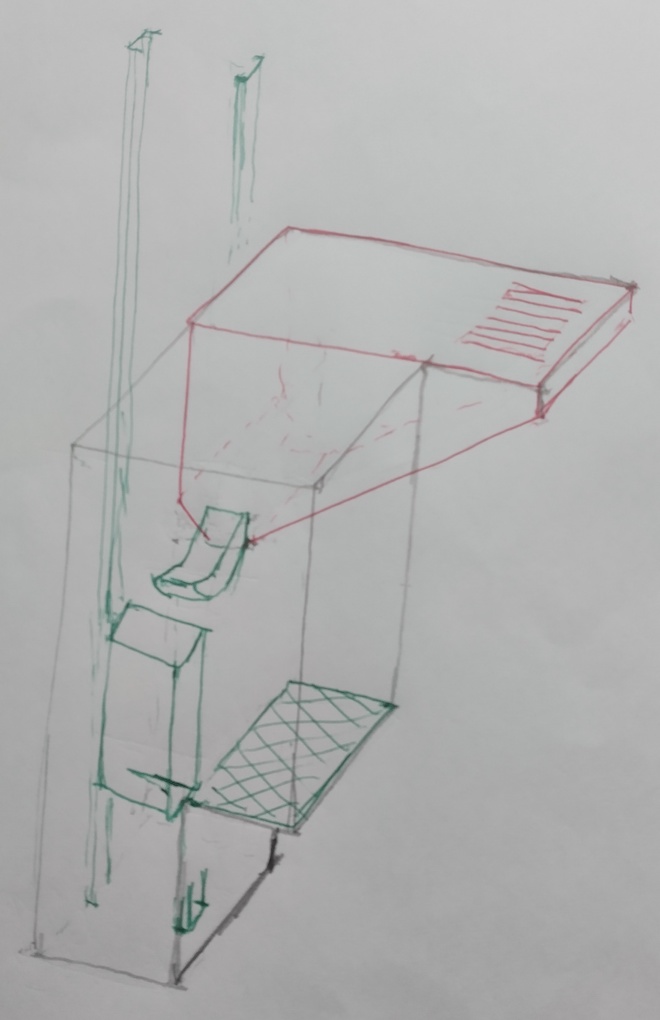[ < Mining, Minerals, Geology, etc. | << website root index page ]
Skip load - Condurrow mine
General view of "the loading pocket"

We note:
-
Ore bin at / just-bellow tramming level is shown in red - with
grizzlies indicted
-
Green is the ore chute, skip (ascends/descends the shaft), the guide
rails and the floor of the "loading pocket"
-
Information:
- The skip is about 1 tonne capacity (?)
- the grizzlies stop stones more than something like 125mm size
Detailed view of suggested skip loading mechanism

-
control of loading from the tramming level
You can look down from the tramming level to the skip below the chute
and see what is going on sufficiently well (I think yes) ?
-
uses a capstan / windlass system with ropes
-
the "gates" are similar but are plate-steel ("slippery" and strong)
-
the gates are self-closing by deadweight (?) and the action is to hold
them open (they fault to closed)
-
I indicate rope from each "gate" converging - because all is achieved
and there is and cannot be more than one windlass (more than one and
the ropes and winding handles would tangle - and overall be
unmanageable + without advantage)
-
I indicate (previous two points) two side-by-side plates of steel so
if one is jammed by a large stone the other would close and shut off
the flow - however no background informs this and a single larger
plate is an obvious option
-
rotating "tip" of chute is also on a capstan / windlass
-
the ropes are deliberately smaller size and limited strength so in
overload they break - eg 6mm cut-film polypropylene rope is
1/2tonne breaking - so does not risk overloading the pitwork the bits
of the mechanism are attached to - given everything defaults to
safe if the ropes break (okay the tip of the chute would not rotate up
but the flow would be stopped by the "gates" and at worst there would
be a few kg of spillage down the shaft)
-
the common objection to cut-film polypropylene (PP) rope ("disposable
rope") is it degrades in sunlight - and given this is down a mine you
would know what is degraded or never formed is what is on the
objectionist's shoulders
... not withstanding the "faults to safe" and "avoids possibility to
overload pitwork in any scenario" arguments
-
one reason for windlass is you can let go of the tail of the rope and
"that's that" - the gates drop in gravity
If the ropes are tailed by elastic you could still tip the tail of the
rope off the windlass ending the "self-servo" and the gates will drop
-
almost nothing new goes down at the "loading pocket" apart from rope
attachments, everything needed through-bolts to existent timbers
(R. Smith, 20Nov2023, 23Nov23 (links inc. wsroot))


